There is a patch of lavender in my local park; I've never noticed it before as it's on the other side of a wall by a footpath. The park is popular with dog walkers, and as it turns out, it's pretty popular with the bees.
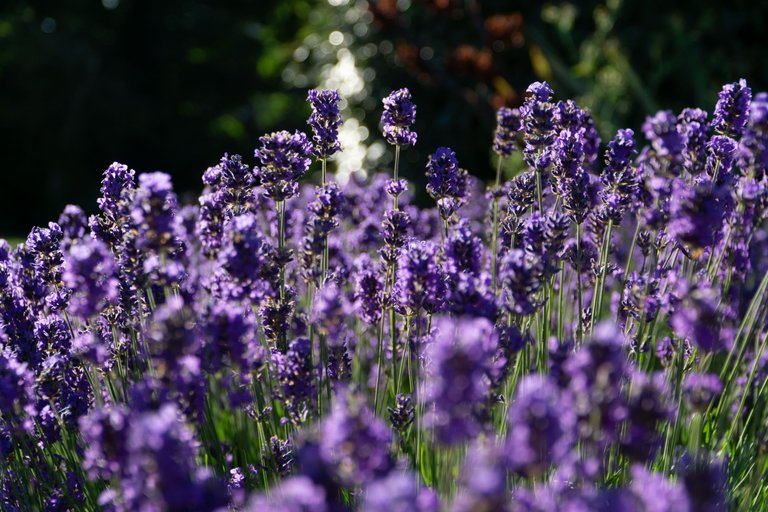
| Key | Value |
|---|---|
| Photographer | @richardslater |
| F-Stop | f/4 |
| Focal Length | 44mm |
| Exposure | 1/800 sec |
| ISO | 100 |
| Camera | Sony A6000 |
| Lens | Sony E PZ 18-105mm F4 G OSS |
| Taken | Friday, 01 July 2022 18:24 |
The Bluebottle Fly
For once, this fly decided to stay still while I took a few shots, this Bluebottle Fly (Calliphora); I wouldn't expect to see one of these on a flower as generally, they feed on things that, erm, don't make for good photographs.
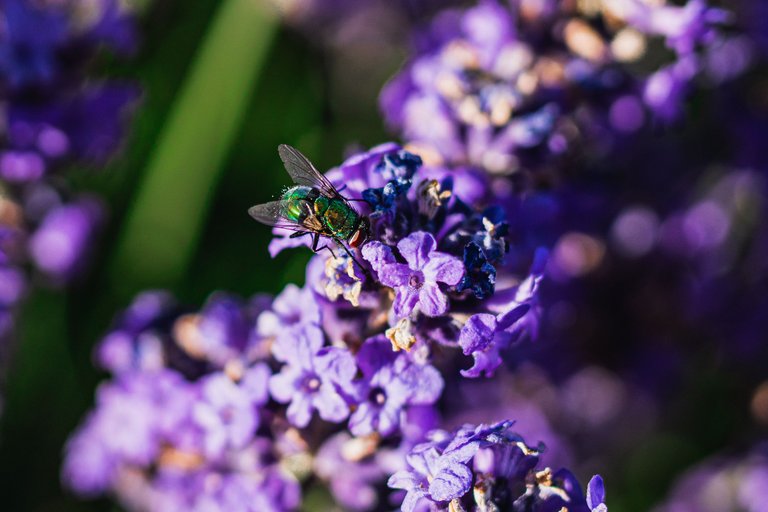
| Key | Value |
|---|---|
| Photographer | @richardslater |
| F-Stop | f/2.2 |
| Focal Length | 50mm |
| Exposure | 1/1600 sec |
| ISO | 100 |
| Camera | Sony A6600 |
| Lens | Sigma 50mm f/1.4 Art DG HSM |
| Taken | Friday, 01 July 2022 18:30 |
The Humble Bumble Bee
Next up, we find a [Buff-tailed Bumblebee (Bombus Terrestris) on Lavender which, from my previous posts, you will know is a ubiquitous sight in the UK.
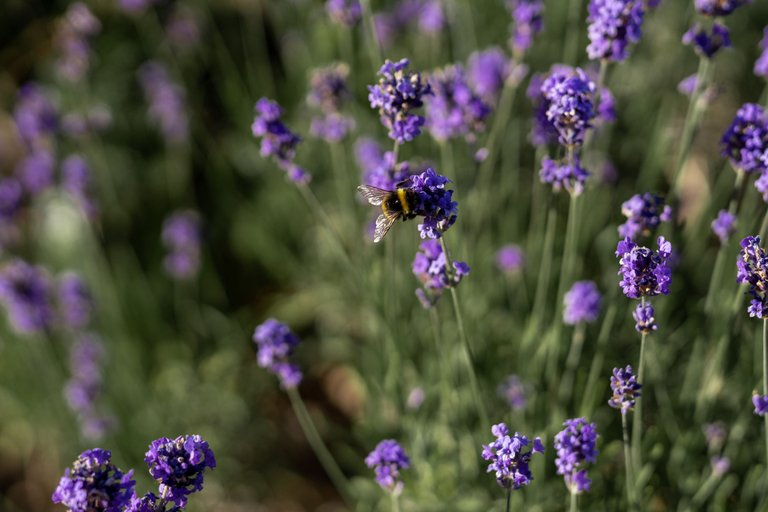
| Key | Value |
|---|---|
| Photographer | @richardslater |
| F-Stop | f/2.2 |
| Focal Length | 50mm |
| Exposure | 1/2000 sec |
| ISO | 100 |
| Camera | Sony A6600 |
| Lens | Sigma 50mm f/1.4 Art DG HSM |
| Taken | Friday, 01 July 2022 18:33 |
You can get very close to bees while feeding, as they are so preoccupied with the nectar that they will pay little attention to you or the camera.
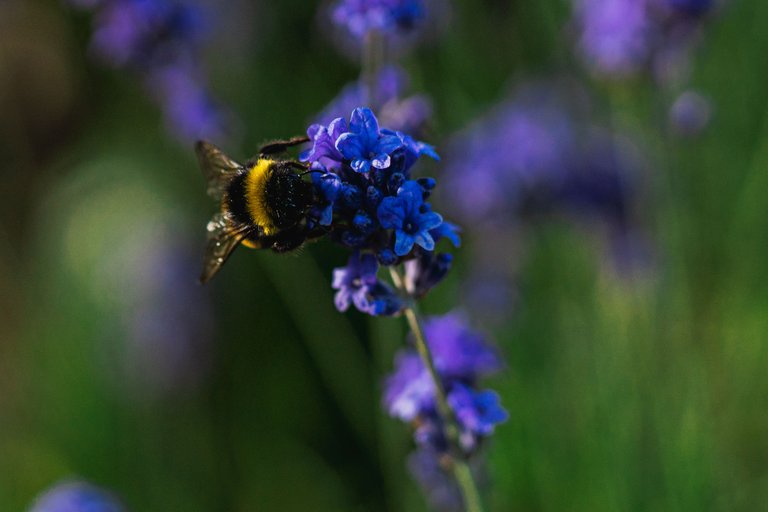
| Key | Value |
|---|---|
| Photographer | @richardslater |
| F-Stop | f/2.2 |
| Focal Length | 50mm |
| Exposure | 1/2000 sec |
| ISO | 100 |
| Camera | Sony A6600 |
| Lens | Sigma 50mm f/1.4 Art DG HSM |
| Taken | Friday, 01 July 2022 18:33 |
When the bee moves off is time to be careful; just move slowly and watch. Don't step too close to a bee and won't get stung. Bees don't want to sting you and will only do so when directly threatened.

| Key | Value |
|---|---|
| Photographer | @richardslater |
| F-Stop | f/1.4 |
| Focal Length | 50mm |
| Exposure | 1/2000 sec |
| ISO | 100 |
| Camera | Sony A6600 |
| Lens | Sigma 50mm f/1.4 Art DG HSM |
| Taken | Friday, 01 July 2022 18:35 |
Honey Bees
Western Honey bees (Apis mellifera) are responsible for the vast amount of honey produced in Europe; they live in the wild, and apiarists domesticate them for commercial honey production.
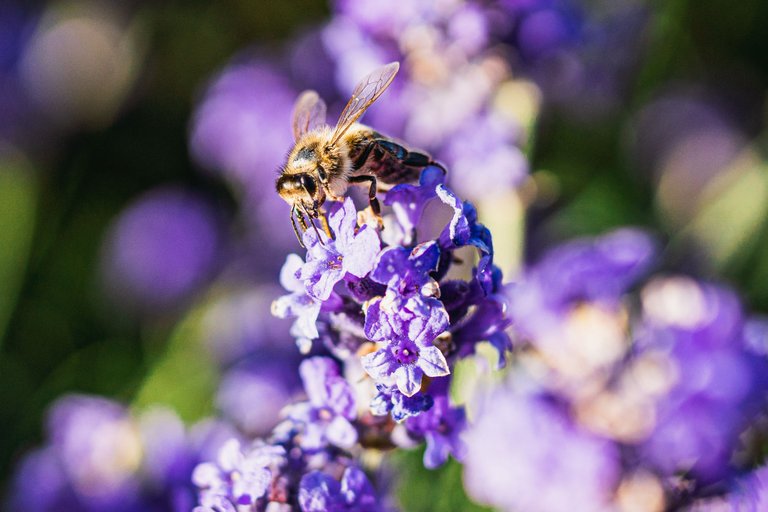
| Key | Value |
|---|---|
| Photographer | @richardslater |
| F-Stop | f/2.2 |
| Focal Length | 50mm |
| Exposure | 1/2000 sec |
| ISO | 100 |
| Camera | Sony A6600 |
| Lens | Sigma 50mm f/1.4 Art DG HSM |
| Taken | Friday, 01 July 2022 18:33 |
Honey bees are unfortunately subject to Colony Collapse Disorder which results in all worker bees leaving a colony for no obvious reason. The worst-case scenario is large populations of bees die off, which would have a knock-on effect on all crop production as bees and other insects are required to pollinate virtually all crop species.
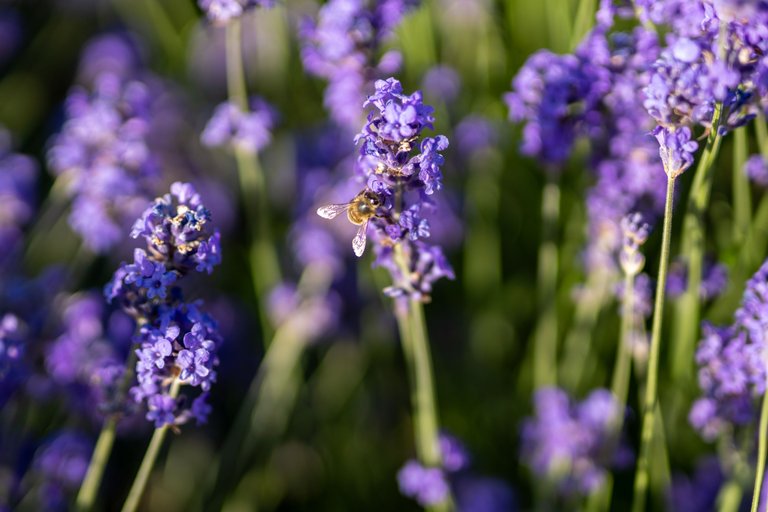
| Key | Value |
|---|---|
| Photographer | @richardslater |
| F-Stop | f/1.4 |
| Focal Length | 50mm |
| Exposure | 1/2000 sec |
| ISO | 100 |
| Camera | Sony A6600 |
| Lens | Sigma 50mm f/1.4 Art DG HSM |
| Taken | Friday, 01 July 2022 18:35 |
The worker bees (or drones) are relatively docile in Europe; I am led to believe that more aggressive species have arisen in the Americas
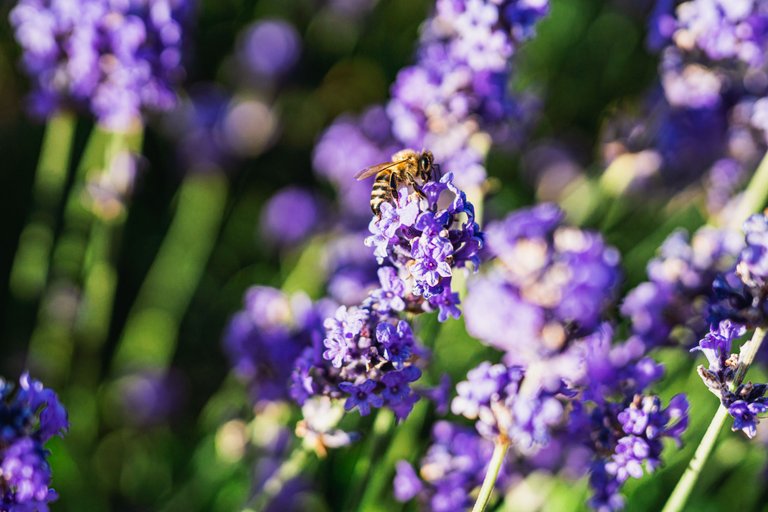
| Key | Value |
|---|---|
| Photographer | @richardslater |
| F-Stop | f/2.2 |
| Focal Length | 50mm |
| Exposure | 1/2000 sec |
| ISO | 100 |
| Camera | Sony A6600 |
| Lens | Sigma 50mm f/1.4 Art DG HSM |
| Taken | Friday, 01 July 2022 18:33 |
I hope you enjoyed these pictures as much as I enjoyed taking them. All words and photographs are my own; if my work has earned a vote, comment, or follow, I greatly appreciate it.
Hi @richardslater,
Thank you for participating in the #teamuk curated tag. We have upvoted your quality content.
For more information visit our discord https://discord.gg/8CVx2Am
Amazing shot, I can clearly see the insects sucking the flower essence from the lavender flower
Thanks, it is a fascinating world to explore.
Congratulations, your post has been added to Pinmapple! 🎉🥳🍍
Did you know you have your own profile map?
And every post has their own map too!
Want to have your post on the map too?
Great photos. I intend to add some lavender to my garden next year in the hope of attracting more insects.
Thanks :) It spreads like mad so plan on trimming it back severely each year or plant it on submerged plant pots to contain it a little. Also french lavender is very pretty, but the bees seem to prefer the English lavender.
Very informative piece
Thank you :)
These are some really incredible shots! Really well done. You captured the Lavender tones perfectly.
Thanks @castleberry I try, appreciate your comment :)
Congratulations @richardslater! You have completed the following achievement on the Hive blockchain and have been rewarded with new badge(s):
Your next target is to reach 60 posts.
You can view your badges on your board and compare yourself to others in the Ranking
If you no longer want to receive notifications, reply to this comment with the word
STOPTo support your work, I also upvoted your post!
Check out the last post from @hivebuzz: